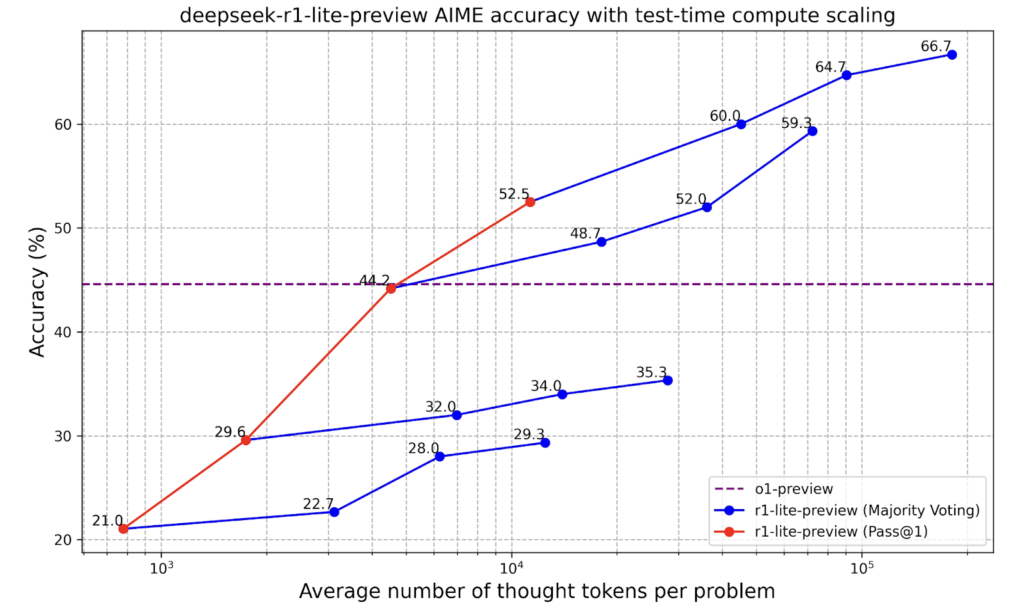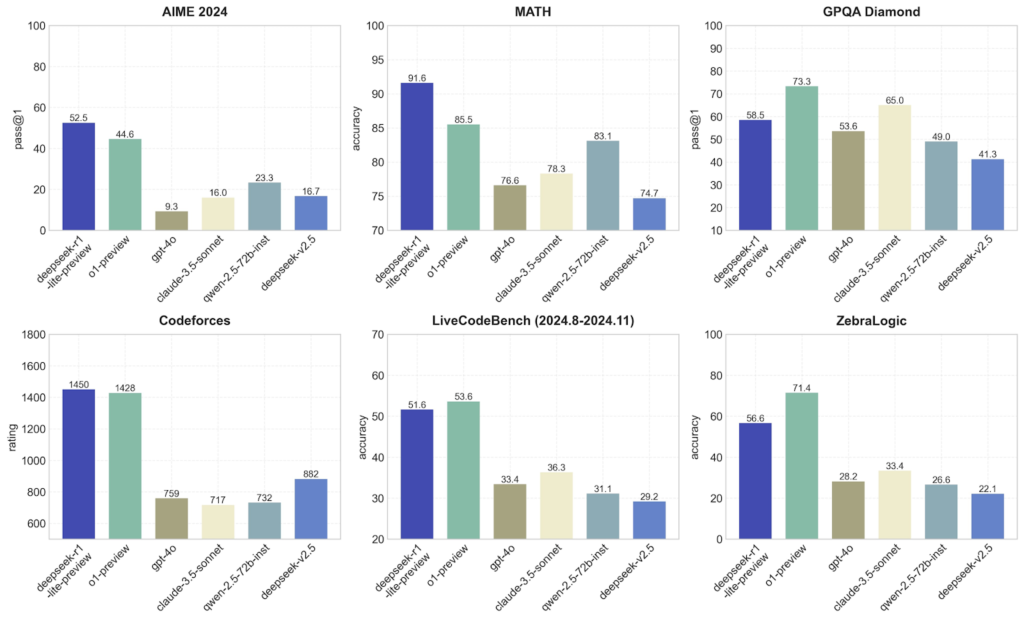
The Chinese lab DeepSeek has unveiled its own “thinking” neural network, DeepSeek-R1-Lite-Preview, which is designed to rival OpenAI’s o1.
🚀 DeepSeek-R1-Lite-Preview is now live: unleashing supercharged reasoning power!
— DeepSeek (@deepseek_ai) November 20, 2024
🔍 o1-preview-level performance on AIME & MATH benchmarks.
💡 Transparent thought process in real-time.
🛠️ Open-source models & API coming soon!
🌐 Try it now at https://t.co/v1TFy7LHNy#DeepSeek pic.twitter.com/saslkq4a1s
These reasoning-capable neural networks can check themselves, spending more time considering the question. This helps avoid some of the traps that confuse regular models.
Similar to o1, DeepSeek-R1-Lite-Preview plans actions in advance and performs them before providing an answer, which can take several seconds in some cases.

According to the developers, the Chinese AI model works on par with o1-preview from OpenAI, as confirmed by tests.

However, the neural network struggles with the game of “Tic-Tac-Toe,” noted X user Paul Kalcraft.
🚀 DeepSeek-R1-Lite-Preview is now live: unleashing supercharged reasoning power!
— DeepSeek (@deepseek_ai) November 20, 2024
🔍 o1-preview-level performance on AIME & MATH benchmarks.
💡 Transparent thought process in real-time.
🛠️ Open-source models & API coming soon!
🌐 Try it now at https://t.co/v1TFy7LHNy#DeepSeek pic.twitter.com/saslkq4a1s
Additionally, the AI is easy to hack and bypass its basic security measures. For example, a user named Pliny the Liberator managed to obtain a methamphetamine recipe.
As a reminder, in July, the Chinese company Kuaishou launched an AI model for generating Kling videos, available to anyone.








 Cryptol – your source for the latest news on cryptocurrencies, information technology, and decentralized solutions. Stay informed about the latest trends in the digital world.
Cryptol – your source for the latest news on cryptocurrencies, information technology, and decentralized solutions. Stay informed about the latest trends in the digital world.